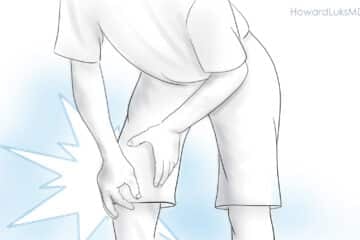
As a runner, monitoring your heart rate is a common way to gauge your fitness level and track your progress. However, heart rate alone doesn’t provide a complete picture of your body’s response to training. That’s where heart rate variability (HRV) comes in.
HRV is a measure of the time interval between heartbeats, and it can provide valuable insights into your overall fitness level, fatigue, and recovery. By incorporating HRV into your training, you can make more informed decisions about when to push yourself and when to take it easy.
To use HRV in your training, you’ll need a heart rate monitor that tracks HRV, as well as an app (HRV4Training) or software to analyze the data. To measure HRV, simply wear the heart rate monitor for a few minutes each day and record the data. The app will then analyze the data and provide insights into your HRV and how it relates to your training.
For example, a normal or slightly higher HRV may indicate that you’re well-rested and ready for a hard workout, while a low HRV may indicate that you’re fatigued and should take a rest day. By using HRV to monitor your fitness level and recovery, you can make more effective training decisions and improve your performance.
One of the benefits of HRV is that it provides a more detailed and nuanced picture of your body’s response to training than heart rate alone. Heart rate is a good measure of overall intensity, but it doesn’t take into account factors like fatigue, stress, or illness, which can all affect your performance. HRV, on the other hand, provides a more comprehensive view of your body’s response to training and can help you identify underlying issues that may be impacting your performance.
For example, if you have a high heart rate but a low HRV, it could be a sign that you’re overtrained or stressed. In this case, taking a rest day or reducing the intensity of your workouts may be the best course of action. On the other hand, if you have a low heart rate but a high HRV, it could be a sign that you’re well-rested and ready to push yourself harder.
Incorporating HRV into your training can also help you avoid overtraining or burnout. When you’re training hard, it’s easy to get caught up in the excitement of improving and push yourself too hard. However, this can lead to overtraining and ultimately reduce your performance. By using HRV to monitor your recovery, you can avoid pushing yourself too hard and ensure that you’re training at the right intensity.
Another benefit of HRV is that it can help you identify potential health issues. For example, if your HRV is consistently low, it could be a sign of an underlying health issue, such as sleep apnea, heart disease, or chronic stress. In this case, it’s important to talk to your doctor and address the underlying issue to ensure your continued health and performance.
In conclusion, incorporating HRV into your training can provide valuable insights into your fitness level, fatigue, and recovery. By using HRV to monitor your body’s response to training, you can make more effective training decisions and improve your performance. HRV can also help you avoid overtraining and identify potential health issues, making it an important tool for any runner looking to optimize their training.













